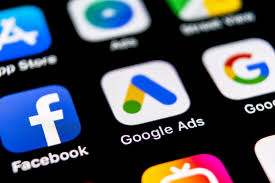Back in 2008, Groupon was all the rage. It became one of the fastest-growing companies, hitting $30 million in its first year and over $1 billion not long after. Why? The timing was perfect. Businesses were struggling through a rough economic downturn, and consumers were on the lookout for deals. Groupon offered the perfect solution: huge discounts that got more customers in the door. It seemed like a win-win.
At the time, smartphones were just starting to take off—remember the early iPhones? Suddenly, people could access deals right from their phones, and Groupon capitalized on that shift, taking over a big chunk of the market. But here’s the catch: while discounts can work wonders in the short term, they don’t solve the bigger, long-term challenges local businesses face.
Local Commerce Isn’t Going Anywhere
Now, 16 years later, e-commerce has definitely grown, but it’s still just a small slice of the overall pie. Most of our purchases still happen in person—whether it’s grabbing lunch, shopping for clothes, or getting a haircut. Local businesses remain the backbone of our communities. But they’re up against a digital ad ecosystem that’s now worth nearly a trillion dollars. Yes, a trillion.
And guess what? All that money spent on ads doesn’t just disappear. Those costs get passed on to us, the consumers. We end up paying higher prices because businesses are caught in a loop—constantly discounting and pouring money into ads just to stay relevant in front of people who live right down the road.
Groupon’s model worked for a while, but it created a race to the bottom. Businesses slashed their prices so much that they barely made a profit. And not only were they cutting prices, but they also had to give a big chunk of that money to Groupon just to be on the platform. Over time, customers got used to always expecting a discount, which isn’t sustainable for businesses trying to make a decent margin.
What We Can Learn from the Groupon Era
The good news is, today we have way better tools. Thanks to advances in technology, local businesses no longer have to rely on blanket discounts or huge ad budgets to reach their customers just down the street. Instead, they can connect directly with their audience—just like e-commerce platforms, marketplaces, and apps like DoorDash do—by offering more personalized perks, incentives, and deals, all driven by real data and insights.
Think about it—businesses don’t have to rely only on a customer’s past purchases. Now, they can see how often that customer visits, if they’ve answered surveys, or even if they’ve recommended the business to friends on social media. The consumer’s profile now includes things like how often they make local purchases, what types of stores and restaurants they frequent, and where they live, work, and shop. Does the customer live nearby, or are they just passing through? Do they eat out often or shop regularly at certain stores? These insights allow businesses to offer smarter, more meaningful deals without just relying on slashing prices.
Wendy’s Experiment: No Surge Pricing Here
Take Wendy’s, for example. Earlier this year, they announced that in 2025, they’d be testing new pricing models. People immediately assumed it was surge pricing, like what you see with Uber or delivery services, but Wendy’s cleared that up quickly. While surge pricing might work for some industries, local businesses like Wendy’s know that consumers value consistency—and that’s where personalized incentives come into play.
Instead of hiking prices during busy times or dropping them during slower periods, businesses can offer deals that are specific to the individual. Maybe a loyal customer gets a special discount as a thank you for their regular visits, or someone walking by gets a notification about a nearby deal that draws them in. It’s not just about changing prices—it’s about giving people a reason to engage that feels personal and rewarding.
The Future of Local Commerce: Smarter, Not Cheaper
The takeaway from Groupon is simple: deals work, but they have to be smart. Businesses can’t survive on deep discounts alone. Today, with all the data available—from foot traffic to customer habits to social media engagement—local businesses can create much more personalized experiences for their customers.
Imagine walking past your favorite coffee shop and getting a notification for a discount based on how many times you’ve visited that month, or because you gave them a shoutout on Instagram. It feels great because it’s tailored specifically to you—not just some blanket discount that everyone gets.
At the same time, businesses don’t have to lose out by constantly lowering prices. Instead, they’re building loyalty and creating stronger connections with their customers, which is what local commerce is all about.
Bridging the Digital and Physical Worlds
The future of local commerce isn’t just about transactions—it’s about relationships. Technology gives us the tools to bridge the gap between the digital and physical worlds, making those relationships even stronger. By allowing businesses to engage directly with customers, we can reduce the dependence on costly ads and unsustainable discounting.
In the end, local commerce is here to stay. It’s not just about offering the cheapest deal; it’s about offering the right deal, at the right time, to the right person. That’s how we create a healthier, more sustainable economy where both businesses and consumers win.






